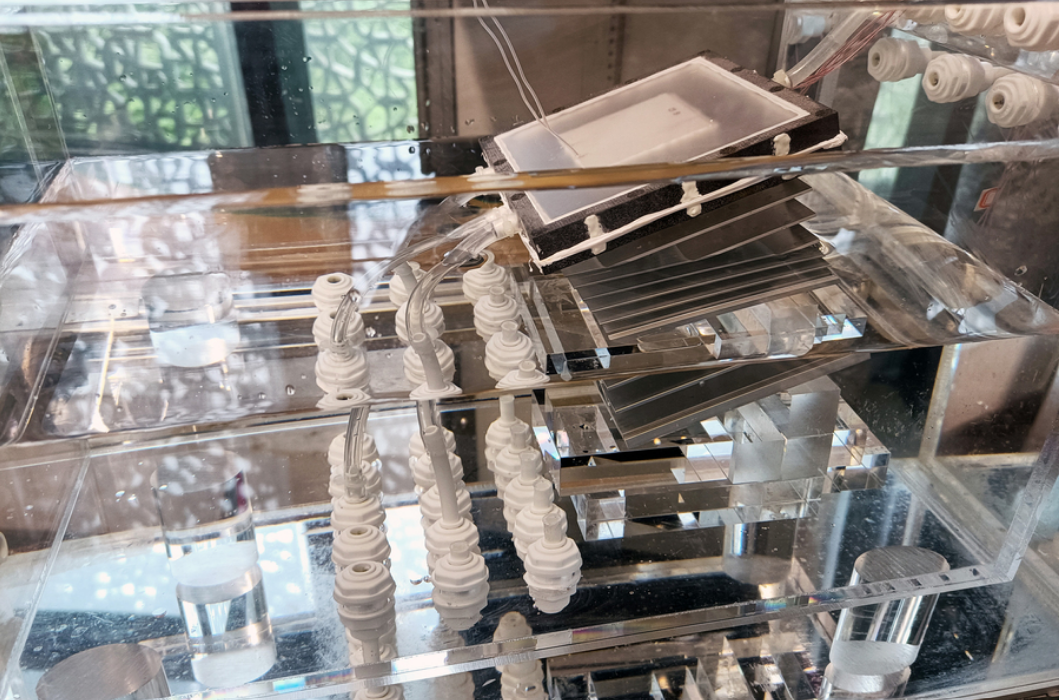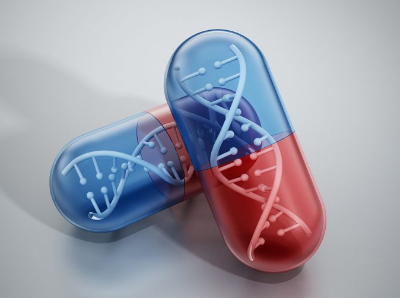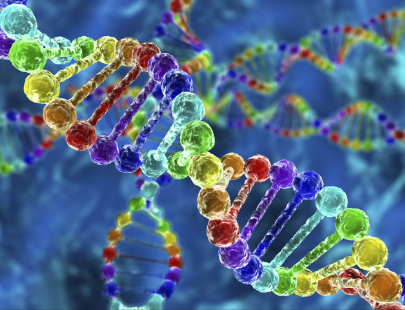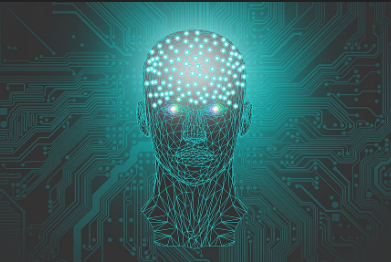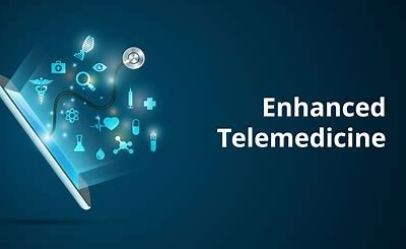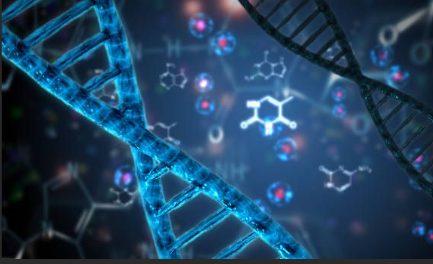Healthcare & Wellbeing
The Massachusetts Institute of Technology (MIT) breakthrough that generates infinite fresh water
1. Introduction
Engineers at the Massachusetts Institute of Technology (MIT) and the Chinese University of Shanghai Jiao Tong are joining forces to develop a state-of-the-art desalination system powered by solar energy that can produce fresh water at a cost that is more economical than tap water. This pioneering device employs natural thermohaline condensation, emulating currents in the sea to efficiently mesh salt from water through the application of solar energy.
The configuration of the device
The system entails several phases of evaporators and condensers, designed to boost water and salt flow. This configuration averts salt build-up, considered for the desalination system as a great problem, permitting the device to function efficiently for prolonged periods without maintenance. After scaling up to the dimensions of a small suitcase, this system can generate 4 to 6 litres of drinking water per hour ( (Chu, Jennifer, 2023).
The system is premeditated to be completely passive, as it does not necessitate electricity, resulting in huge operation costs redaction. It is more likely to be extremely efficient even with variable salinity levels of water, as well as natural seawater and highly salty water ( MIT Portal, MIT News).

An intense convection
The team's new method improves on their prior design, which featured many tiers known as stages. Each stage included an evaporator and a condenser that passively separated salt from entering water using solar heat. That device, which the team tested on the roof of an MIT building, efficiently turned solar energy into evaporated water, which was then condensed into potable water. However, the remaining salt quickly gathered as crystals, clogging the system within a few days. In a real-world scenario, a user would have to place stages on a regular basis, considerably increasing the system's overall cost.
The engineers think it has ultimately emerged a design that may generate an enormous quantity of water at an accelerated pace while simultaneously eliminating a substantial proportion of salt, enabling the system to generate safe drinking water continuously. The heart of their innovative design resides in the fusion of their two preceding ideas: a multi-tiered arrangement of evaporators and condensers, which is also structured to enhance the flow of water and salt within every leve
The minor circulations produced by the team's innovative technology are comparable to the ocean's "thermohaline" convection, which is a phenomenon that propels water movement worldwide based on variations in salinity and sea temperature. Thermohaline Thermo means Temperature and Haline is Salinity
The centrepiece of the team's new design is a singular stage that takes the form of a small box, covered with a black material that effectively retains the sun's heat. The internal structure of the box is separated into two separate parts: its top part and its bottom section. The higher part of the structure enables water to pass through. This area is equipped with an evaporator layer that utilises solar energy to heat up and evaporate any water that comes into direct contact with it. The water vapour is subsequently sent to the lower section of the container, where a condensation layer cools the vapour using air, resulting in the formation of a salt-free, potable liquid. The researchers placed the entire box at an incline within a bigger, empty container. They then connected a tube from the upper part of the box to the bottom of the container and floated the container in seawater. In this arrangement, water can spontaneously ascend via the tube and enter the box, where the inclination of the box, along with the thermal energy from the sun, causes the water to rotate as it passes through. The presence of minor eddies facilitates the contact between water and the upper evaporating layer, while also preventing the salt from settling and causing blockages by maintaining its circulation.
The team constructed multiple prototypes, each featuring a various amount of phases (one, three, and 10), and analysed their effectiveness in water with wide salinity levels, including both normal seawater and water that was seven times more saline. Based on the conducted experiments, the scientists determined that if each phase were expanded to cover an area of one square metre, it would provide a maximum of 5 litres of potable water per hour. Furthermore, the system has the capability to remove salt from water without any salt build-up for multiple years. Considering the prolonged lifespan and the complete lack of electricity required to operate the system, the team predicts that the total expenses for maintaining the system would be considerably less than the cost of producing tap water in the United States.
Bibliography
Chu, Jennifer. (2023, September 2023). MIT. Retrieved from MIT News: /news.mit.edu/2023/desalination-system-could-produce-freshwater-cheaper-0927
The Biotechnology in Medications Development
1. Introduction
Biotechnology has transformed the procedure of developing medications through identifying, creating, and manufacturing medications (1). The collective application of biological processes and technological innovations have provided considerable scientific advances, remarkably in parts associated with explicit treatments, personalised medicine, and genomic alteration (2).
2. Biotech Tools and Techniques in Medicines Development
2.1 Genetic Engineering.
CRISPR editing of genes is an innovation in molecular biology that enables the alteration of an organism's genetic makeup through the use of genetic engineering. The technique is based on a simplified version of the bacterial CRISPR-Cas9 antiviral protection enzyme. CRISPR/Cas9 is a genomic engineering procedure that permits accurate DNA adjustments, that lead to the development and reach of genetically engineered medicines (3).
2.2 Monoclonal Antibodies.
Monoclonal antibodies are formed by matching immune cells, which are copies of only a parent cell. They are employed to treat a variation of conditions, exclusively cancer and auto-immune illnesses (4).
2.3 Recombinant DNA Technology.
Recombinant DNA manufacturing empowers the integration of new DNA in an organism's genome, allowing the engineering of therapeutic proteins (5).
2.4 Protein Engineering.
Protein manufacturing is the procedure of designing and structuring new proteins, also, altering existing ones, to improve therapeutic properties (6).
3. Drug Discovery and Development Process
3.1 Target Identification and Validation
Biotechnology techniques are utilised to establish and confirm biological goals to develop medications, such as proteins or genes that perform a role in illness processes (7).
3.2 High-Throughput Screening
High-throughput screening (HTS) is a technique that comprises the examination of a huge amount of composites to find the ones that exhibit a specific intended conclusion on a biological target (7).
3.3 Preclinical and Clinical Trials
Biotechnology helps in the development of preclinical models and designs for clinical trials, enhancing the assessment of the safety and effectiveness of pharmaceuticals (8).
4. Innovations in Biotechnology for Drug Development
4.1 Gene Therapy
Gene therapy is the process of introducing or modifying genetic material in a patient's cells to treat or prevent disease (9).
4.2 Cell Therapy
Cell therapy involves the transfer of intact cells into a patient's body to treat or control a disease (10).
4.3 Personalised Medicine
Personalised medicine employs environmental, genetic, and lifestyle data to customise treatments for specific patients (11).
5. Regulatory and ethical considerations.
5.1 Regulatory Framework
Regulatory Framework The government bodies regulate the licensing and regulation of biotech medications (12).
5.2 Ethical issues
Ethical concerns in biotechnology include editing genes, confidentiality, and equal distribution of emerging therapies (13).
6. Future Trends and Challenges.
6.1 Integration with Artificial Intelligence
Artificial intelligence (AI) has emerged as more prevalent in drug discovery, providing new methods for analysing data and predicting medication interactions (14).
6.2 Managing Global Health Challenges
Biotechnology is critical for addressing global health issues like pandemics, resistance to antibiotics, and persistent illnesses (15).
7. Conclusion.
Biotechnology plays an important part in developing medicines, from the initial stages of research to marketable products. Emerging technologies, regulatory frameworks, and worldwide health needs are probably to shape biotechnology's future in developing medicines (16).
References
1. Jacobson, M., & Jacobson, E. (2020). Introduction to Biotechnology: How Biotech is Changing Medicine. Springer.
2. Harvard Business Review. (2018). “How Biotechnology is Transforming Drug Development.” Harvard Business Review.
3. Doudna, J. A., & Charpentier, E. (2014). “The New Frontier of Genome Editing with CRISPR-Cas9.” Science, 346(6213), 1258096. Link.
4. Kohler, G., & Milstein, C. (1975). “Continuous Cultures of Fused Cells Secreting Antibody of Predefined Specificity.” Nature, 256, 495-497. Link.
4. Sambrook, J., & Russell, D. W. (2001). Molecular Cloning: A Laboratory Manual. Cold Spring Harbor Laboratory Press.
5, Noren, C. J., & Anthony-Cahill, S. J. (1993). “Protein Engineering: Improving Proteins and Processes.” Annual Review of Biochemistry, 62, 171-209. Link.
6. Sridhar, R., & Schürer, S. C. (2018). “Target Identification and Validation in Drug Discovery.” Drug Discovery Today, 23(6), 1235-1245. Link.
7. Sittampalam, G. S., et al. (2015). “High-Throughput Screening Assays and Drug Discovery: A Review.” Current Opinion in Chemical Biology, 24, 18-25.
8. Yamashita, S., & Kuroda, Y. (2016). “Biotechnology in Preclinical and Clinical Trials.” Journal of Clinical Pharmacology, 56(1), 27-38.
9. Hosseini, S. M., & Shahnazari, N. (2020). “Gene Therapy: An Overview of Current Technologies.” Gene Therapy, 27(8), 391-399. Link.
10. Stewart, R. J., & Hsu, P. Y. (2021). “Advances in Cell Therapy and Its Role in Drug Development.” Cell Stem Cell, 28(4), 530-544. Link.
11. Collins, F. S., & Varmus, H. (2015). “A New Era in Medicine: Personalized Health Care.” Science, 349(6255), 500-501. Link.
12. Landy, A. C., & Meyer, L. H. (2019). “Regulatory Challenges in Biotechnology Drug Development.” Regulatory Affairs Journal, 18(2), 112-121. Link.
13. Jasanoff, S. (2006). Biotechnology and Society: An Introduction. Routledge.
14. Baker, M. (2021). “AI in Drug Discovery: The Future of Pharmaceutical Research.” Nature Reviews Drug Discovery, 20, 160-161. Link.
15. Zhang, X., & Li, Z. (2020). “Biotechnology in Addressing Global Health Issues: A Review.” Global Health, 16(1), 45. Link.
16. Anderson, D. W. (2019). “The Future of Biotechnology in Drug Development: Trends and Predictions.” Pharmaceutical Research, 36(5), 1046-1054. Link.
Report on Genomics and Personalised Medicine
Personalised medicine and Genomics are groundbreaking advances in healthcare that effort to personalised medical treatment constructed on specific genetic profiles. This chapter explores into the fundamental principles, technological advancement, applied uses, benefits, complications, and diagnoses of genomics and tailored medicine.
Fundamental concepts
1. Genomics:
iIt s the scientific discipline that investigates the entirety of an organism’s DNA, known as its genome. This research field encompasses examining the genome’s structure, function, evolution, and mapping. Genomic analysis involves studying all genes and their connections to understand their impact on health and disease.
2. medicine, commonly called precision medicine:
It entails customising medical therapy based on the unique characteristics of all patients. This method considers genetic, environmental, and behavioural aspects to create therapies that are more efficient and focused.
3. Technological progress
1. Next-generation sequencing (NGS) refers to advanced technologies that enable fast and thorough sequencing of complete genomes or particular sections of the genome. Genome sequencing has been significantly transformed by this advancement, leading to increased speed, reduced cost, and improved accessibility in genetic research and diagnostics.
Illumina’s Next-Generation Sequencing (NGS) technologies are extensively utilised for whole-genome sequencing, facilitating meticulous examination of genetic variants and mutations.
2. CRISPR-Cas9 is a gene-editing tool.
Clustered regularly interspaced palindromic repeats (CRISPR)/Cas9 is an innovative technique for editing genomes that enables accurate alterations to DNA. It possesses the capacity to rectify genetic mutations and address genetic illnesses at their origin, It makes it possible to correct errors in the genome and turn on or off genes in cells and organisms
CRISPR Therapeutics is now engaged in the development of treatments using CRISPR technology specifically designed for illnesses such as sickle cell disease and beta-thalassemia.
3. Bioinformatics is the application of computing technologies to analyse and interpret biological data. Managing and analysing the large quantities of data produced by genetic investigations is crucial.
The Human Genome Project extensively utilised bioinformatics to accurately map and comprehend the human genome.
Software programs or computer applications.
1. Medical intervention for the treatment of cancer:
By doing genomic profiling of tumours, it is possible to identify precise mutations that are responsible for driving the growth of cancer. This knowledge allows for the creation of medicines that specifically target these mutations. This method enhances the effectiveness of treatment and minimises the occurrence of adverse effects.
2. An instance of personalised medicine that has achieved success is the utilisation of Human epidermal growth factor receptor 2, HER2-targeted treatments such as trastuzumab (Herceptin) in cases of HER2-positive breast cancer.
Pharmacogenomics is the field of study that investigates the influence of genes on an individual’s reaction to medications. It aids in the selection of appropriate drugs and doses for individual patients, reducing negative side effects and maximising therapeutic advantages.
The US Food & Drugs Administration (FDA) advises doing genetic testing before administering the anticoagulant warfarin to ascertain the most suitable dosage and minimise the likelihood of bleeding problems.
3. Rare genetic disorders can be diagnosed using whole-exome sequencing and whole-genome sequencing, which can pinpoint the specific genetic abnormalities responsible for the condition. This allows for earlier and more precise diagnosis.
Example: Diagnosing cystic fibrosis by detecting mutations in the CFTR gene.
Prenatal and newborn screening involves the use of genomic testing to detect genetic abnormalities in fetuses and infants. This enables timely intervention and treatment of hereditary disorders.
4. Non-invasive prenatal testing (NIPT) is a screening method used to detect chromosomal abnormalities, such as Down syndrome.
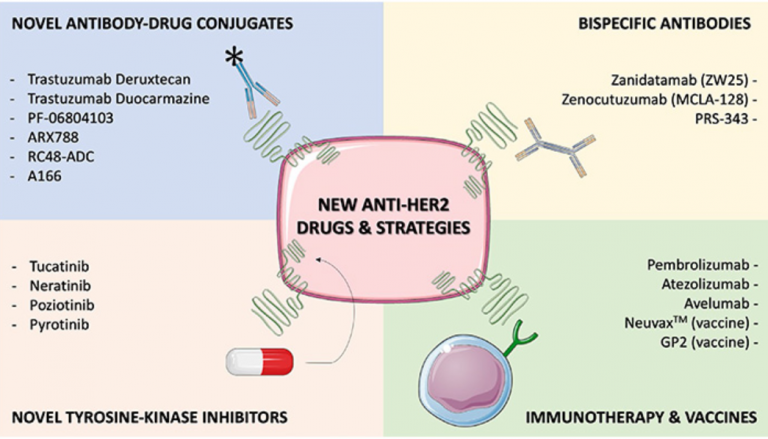
Benefits
1. Enhanced Treatment Results:
Personalized medicine enhances the probability of effective treatment by tailoring medicines to an individual’s genetic profile, hence minimising the need for tests and mistakes in medication selection.
2. Decreased Adverse Reactions:
Through comprehension of genetic characteristics, healthcare personnel could refrain from giving medications that potentially induce significant side reactions in specific patients.
3. Healthcare Prevention:
Genomic details could be exploited to identify patients with a heightened susceptibility to specific illnesses, allowing for preventive interventions and modifications to their lifestyle to avert the start of these maladies.
4. Optimal Resource Utilization:
Targeted therapy can achieve greater cost-efficiency over time by minimising the necessity for expensive and repetitive treatments.
Challenges
1. Ethical and privacy concerns: It is crucial to prioritise informed permission, privacy of information, and safeguarding from discrimination based on genetics.
2. Data interpretation: Treatment and diagnosis decisions can be challenged by variants of uncertain significance (VUS).
3. Cost and Accessibility: Although there has been a decline in the cost of genome sequencing, it still retains prohibitively exorbitant for a significant number of patients. Achieving fair and equitable accessibility to genetic medicine is a substantial obstacle.
4. Incorporating genetic information into routine clinical procedures:
It necessitates educating medical professionals and establishing uniform processes.
Future Directions
1. Developments in Genome Editing: Ongoing progress in genome-editing technologies such as CRISPR will broaden their therapeutic uses, potentially leading to the eradication of genetic disorders.
2. The expansion of personalised medicine is expected to occur as genomic databases continue to expand and our knowledge of hereditary impacts on health advances. This will lead to the integration of personalised medicine into mainstream healthcare practices.
Artificial Intelligence (AI) and Machine Learning (ML) will have a pivotal role in examining intricate genomic data, detecting patterns, and forecasting the likelihood of diseases and the effectiveness of treatments.
4. Global genetic Initiatives: International partnerships, such as the Global Alliance for Genomics and Health (GA4GH), will improve data exchange and facilitate research, speeding up scientific breakthroughs and the adoption of genetic healthcare on a global scale3.
Scaling healthcare globally, particularly at a “Scale 3,” denotes moderate yet substantial global initiatives or programs that address health concerns. This could entail the following:
Targeted Interventions, Capacity Building, Technology Deployment, Health Education and Prevention, Partnerships and Funding, Data and Monitoring, Policy and Advocacy, and Strengthening Local Health Governance
“Scale 3” implies a concentration on substantial, focused health interventions that, despite their limited global reach, have a significant regional or multi-country impact. These efforts are crucial for addressing specific health challenges strategically and effectively.
Conclusion
Genomics and personalised medicine are leading the way in a medical revolution, providing the potential for customised medicines that are both more efficient and have reduced negative effects. Notwithstanding the difficulties, the continuous progress in technology and research is creating a path towards a future where health is genuinely tailored to individual needs. To fully unlock the potential of genomes and personalised medicine, it is crucial to overcome ethical, operational, and educational obstacles. Doing so will result in substantial enhancements in medical treatment and results.
Report on Artificial Intelligence in Diagnostics
Artificial Intelligence (AI) in diagnostics is a highly influential innovation in modern medicine. AI technologies, such as machine learning, deep learning, and natural language processing, are being incorporated into diagnostic procedures to improve accuracy, efficiency, and customisation in healthcare. This chapter explores the progress, uses, advantages, obstacles, and future prospects of AI in diagnostics.
Telemedicine and Digital Health
Significant progress or breakthroughs:
1. Image Analysis and Interpretation: Artificial intelligence algorithms, namely convolutional neural networks (CNNs), are extremely proficient at examining medical images obtained from radiology, pathology, and dermatology. These technologies can accurately identify abnormalities such as tumours, fractures, and lesions.
Google’s DeepMind has created an artificial intelligence (AI) system that can accurately detect eye illnesses by examining retinal scans, achieving comparable results to those of skilled ophthalmologists.
2. Predictive Analytics:
Artificial intelligence models can forecast the occurrence of illnesses by examining extensive datasets derived from electronic health records (EHRs), genetic data, and patient medical history. These prognostications facilitate prompt action and precautionary healthcare.
IBM Watson Health uses artificial intelligence (AI) to forecast the probability of heart disease by examining patient data, which encompasses aspects of lifestyle and medical history.
3. Natural Language Processing (NLP):
It allows AI systems to analyse and handle unstructured medical documents, such as medical records and research articles. This facilitates the extraction of essential data and assists in the process of making healthcare decisions.
Nuance’s Dragon Medical One utilises Natural Language Processing (NLP) to precisely transcribe physicians’ notes, hence enhancing the efficiency of documentation.
4. Incorporation with Wearable Devices:
Wearable devices enhanced with artificial intelligence (AI) constantly track symptoms and other health measurements, delivering immediate diagnostic data and notifying users and healthcare professionals about potential health problems.
The Apple Watch utilises artificial intelligence (AI) to identify abnormal heartbeats and alert users about the possibility of atrial fibrillation, so encouraging them to seek additional medical assessment.L:
Benefits
1. Enhanced Diagnostic Precision:
Artificial intelligence algorithms can analyse extensive quantities of data and identify patterns that may elude medical professionals, resulting in more precise assessments.
2. Efficiency and Speed:
Artificial intelligence (AI) systems can quickly evaluate complicated medical data, which reduces the amount of time needed for medical diagnostics and speeds up the decision-making process
3. Personalised Medicine:
Artificial intelligence facilitates the tailoring of treatment strategies according to unique patient data, encompassing genetic characteristics and lifestyle characteristics, resulting in enhanced and individualised healthcare.
4. Cost Reduction in Healthcare:
Through enhancing diagnostic precision and efficiency, AI has the potential to minimise the necessity for redundant tests and unwarranted treatments, hence leading to a decrease in healthcare expenses.
5. Improved Accessibility: Artificial intelligence-driven diagnostic tools can be utilised in rural and underserved regions, granting access to top-notch diagnostic services in areas which they are otherwise inaccessible.
Challenges
1. Data Quality and Bias:
Artificial intelligence algorithms necessitate substantial quantities of well curated data for effective training. Should the data be biassed or incomplete, the AI’s diagnostic abilities may be damaged, resulting in erroneous or unjust decisions.
2. Regulatory and Ethical Issues:
The implementation of AI in diagnostics gives rise to regulatory and ethical considerations, such as safeguarding patient privacy, ensuring data security, and establishing strong supervision to guarantee the safety and efficacy of AI systems.
3. Integration with Existing Systems:
The process of incorporating AI technologies into current healthcare infrastructure, such as electronic health record (EHR) systems, can be technically complex and necessitate substantial investment and collaboration.
4. Clinician Acceptance and Training:
Healthcare personnel must undergo training to proficiently utilise AI tools and have confidence in the advice they provide. Resistance to the adoption of cutting-edge innovations can arise, particularly when they are seen as posing a risk to established methods.
5. Transparency and Explainability:
Numerous AI models, particularly deep learning systems, function as “black boxes,” rendering it arduous to comprehend the process by which they reach their findings. The absence of openness might impede the development of trust and acceptance.
Future Directions
1. Hybrid models That involve the integration of artificial intelligence (AI) with human expertise, which can significantly improve the accuracy and dependability of diagnostic processes. Artificial intelligence is capable of managing jobs that include a large amount of data, however, human clinicians offer a deeper grasp of the situation and demonstrate empathy.
2. Continuous Learning and Adaptation: AI systems can consistently acquire knowledge and adjust their functioning based on fresh data, hence enhancing their ability to diagnose effectively as time progresses. This necessitates continuous data gathering, annotation, and model refinement.
3. AI-powered personal health assistants may advance to the point where they may offer users direct diagnostic services, real-time health monitoring, and customised health advice.
4. Collaborative systems that include artificial intelligence (AI) and blockchain technology for enhanced data security and interoperability have the potential to revolutionise diagnostic processes.
5. Global Health Initiatives: Artificial intelligence (AI) can have a significant impact on global health initiatives by offering scalable diagnostic solutions in areas with limited resources. This can help bridge the gap in healthcare access and improve results for underserved populations.
Conclusion
The application of Artificial Intelligence in diagnostics is transforming the area of medicine by improving the precision, efficiency, and customisation of diagnostic procedures. In order to fully harness the promise of AI in healthcare, it is crucial to address the hurdles associated with data quality, regulatory concerns, and integration, despite the considerable benefits it offers. With the ongoing advancement of AI technology, it holds the potential to revolutionise the diagnosis and treatment of diseases, leading to better patient outcomes and a complete transformation of the healthcare industry.
Report on Telemedicine and Digital Health
Telemedicine and digital health have experienced substantial changes in recent years, propelled by technological advancements and the imperative created by the COVID-19 epidemic. This chapter examines the fundamental advancements, advantages, obstacles, and prospects of telemedicine and digital health.
Telemedicine and Digital Health
Essential Innovations:
1. A distinguished breakthrough in telemedicine is the incorporation of Patient virtual consultations with health practitioners where help will be provided such as diagnostics, orientations, medications and other range of services, as well as emergency care and mental health consultations.
This innovation has enhanced the accessibility of healthcare, specifically for patients living in remote or underdeveloped parts.
2. Remote Patient monitoring (RPM), encompasses the usage of digital tools to gather medical data and its transmission to healthcare providers for examination and implementation.
For example, devices such as smartwatches for heart rate measurements and sensing tools to measure blood sugar for diabetic people
3. Digital Therapeutics: employ software systems to be able to regulate, or avert illnesses. These involvements are grounded on accurate data that could be utilised distinctly or together with traditional treatments.
4. Machine Learning and Artificial Intelligence AI: Telemedicine platforms mix AI and machine learning to improve diagnostic precision, personalise treatment methods, and predict patient health results.
Babylon Health employs artificial intelligence (AI) for health evaluations and assistance through the assessment of patient medical health records and feedback
Benefits
1. Improved Healthcare Accessibility: Telemedicine eliminates geographical limitations, empowering the public in remote and underdeveloped areas to without difficulty access healthcare services. Furthermore, it provides suitable accessibility to those with mobility challenges.
2. Cost-Effectiveness: Telemedicine can minimise the necessity for in-person schedules, subsequently reducing healthcare expenses for patients and providers, whether in transportation, hospitalisation, or personnel.
3. Heightened Patient Engagement: Digital health devices endorse the active involvement of patients in their health management. Smartphone and Wearable device applications could be used as health monitors, medication reminders and educational materials providers.
4. Continuousness of Care: Telemedicine enables the continuous delivery of healthcare through recurrent check-ins and follow-ups, which are indispensable for the management of lasting illnesses and post-operative recovery.
Challenges
1. Legal and Regulatory Concerns: The swift development of telemedicine has exceeded the establishment of regulatory frameworks. Licensing, patient privacy and reimbursement are still to be a huge issue.
2. Technological barriers: some patients can not use telemedicine due to lack of the necessary resources, or online access or are not computer literate.
3. Data Security and Confidentiality: the protection and privacy of patient information. The propagation of electronic health records has highlighted concerns about unauthorised access and potential privacy breaches.
4. Care Quality: There are some concerns regarding the quality of care in contrast to physical consultations as in some cases, physical diagnostics might be vital, and necessary rather than conducted by telemedicine
Future Directions
- The integration of Telemedicine with healthcare services is projected to accompany it permanently, becoming the standard. The prospect of fusion models, which are associated with virtual care and in-person.
- Heightened Interoperability: Present endeavours are concerted on refining the interoperability and smooth, and all–in–one integration of diverse telemedicine systems with electronic health records (EHRs). This will update the unified transfer of patient information and improve the harmonisation and collaboration of healthcare providers.
- Service Development: Telemedicine services are expanding their space to incorporate specialised arenas like cardiology, psychiatry, and dermatology. This extension will bring an extensive assortment of healthcare selections for patients, and assurances of full and wide-ranging levels of treatment.
- Innovative Payment Procedures: Developing transactional payment systems, with value-based care, is being discovered to deliver reasonable equitable payment for telemedicine services. These models emphasise patient results over the number of services obtainable.
Conclusion
Digital Health and Telemedicine characterise a noteworthy alteration in the establishment of healthcare. The development in this sphere can expand the approachability, effectiveness, and centred patient healthcare. However, it is vital to challenge the barriers connected to technology, quality of care, and policy to successfully benefit from the advantages of these progressions. The possible applications of telemedicine will increase with technological developments, henceforth enabling a supplementary solid and knowledgeable healthcare system.
The latest Innovations in Medical Fields
The summary of the latest developments in the healthcare area is established in the following categories which explore innovative developments in various branches of medicine, delivering an introduction of the future advancements in healthcare.
Chapter1: Telemedicine and Digital Health
Digital health and telemedicine platforms have The development of telemedicine and digital health technologies has been swift, precisely throughout the COVID-19 period. These innovations comprise virtual sessions, distant monitoring, and numerical medicines.
Chapter 2: Artificial Intelligence in Diagnostics Advancement:
Artificial intelligence (AI) and machine learning have revolutionised procedures for diagnosis by contributing approaches for immediate identification of illnesses like cancer, the medical images’ interpretations, and anticipating patient outlooks.
Chapter 3: Genomics and Personalised Medicine
CRISPR is a simplified version of the acronym “clustered regularly interspaced short palindromic repeats,” which defines a set of DNA sequences that exist in the genetic makeup of basic organisms like bacteria and archaea. The genes were extracted from fragments of DNA of bacteria which already stricken the prokaryote. They are employed to identify and eliminate DNA from comparable bacteriophages upon subsequent infections.
CRISPR technology has allowed the widespread utilisation of personalised medical methods, which involve tailoring medications according to a someone’s genetic traits. This technique seeks to optimise the efficacy of medicines while limiting the possibility of adverse effects.
CRISPR editing of genes is an innovation in molecular biology that enables the alteration of an organism’s genetic makeup through the use of genetic engineering. The technique is based on a simplified version of the bacterial CRISPR-Cas9 antiviral protection enzyme.
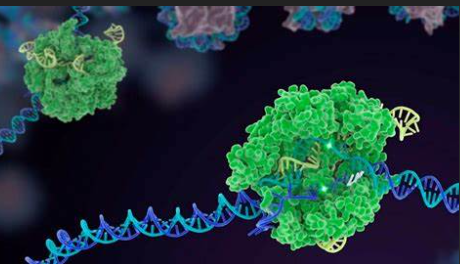
CRISPR Genome Editing Tools
Chapter 4: Wearable Health Technology
Wearable technology is gradually gaining prominence for the intent of consistent health management. They supply data at once concerning health metrics and degrees of bodily activity.
Chapter 5: 3D Printing in Medicine
Innovation: The utilisation of 3D printing technology allows the design of customised approaches and innovative surgical methods through the production of bio-printed tissues and organs, implants, and individual prosthesis.
Chapter 6: Robotics in Surgery
IInnovation: the use of robotics optimises surgical accuracy, versatility, and management. The Leonardo da Vinci Operation System has been viewed as a major exemplification, facilitating minimally invasive surgeries.
Chapter 7: Advanced Prosthetics
Recent developments in prostheses with neural integration have significantly enhanced the quality of life for patients who experienced amputations, through improved control and perception of sensation and feel.
Chapter 8: Regenerative Medicine
The advancement in regenerative healthcare mostly emphasises the utilisation of stem cell therapy and tissue engineering techniques to restore degenerated tissues and organs. This technique has the ability to provide solutions for illnesses that were once regarded as incurable.
Chapter 9: Nanomedicine
Nanomedicine is a science that incorporates nanoparticles for the functions of delivering medications, performing imaging, and molecular-level healthcare. This method boosts accuracy in pinpointing particular locations and reduces the probability of unforeseen results.
Chapter 10: Biotechnology in Medications Development
The advancement of biotechnology is accelerating the creation of medications through the use of biopharmaceuticals, monoclonal antibodies, and gene-based medicines, contributing to the innovation of more efficient and effective treatments.
Chinese innovations and developments aimed at improving the lives of people with diabetes:
China has been actively advancing its medical solutions for diabetes, reflecting a significant focus on innovation in this field. Here are some of the notable Chinese innovations and developments aimed at improving the lives of people with diabetes:
1. Digital Health Platforms and Mobile Applications
Chinese companies have developed various mobile applications and digital health platforms to help diabetics manage their condition effectively. These platforms often include features such as:
-
- Blood Glucose Monitoring: Continuous and real-time tracking of blood glucose levels using smart devices.
-
- Diet and Exercise Recommendations: Personalised plans based on the user’s health data.
-
- Telemedicine: Remote consultations with healthcare professionals.
2. Artificial Intelligence (AI) in Diabetes Management
AI is being leveraged to enhance diabetes management in several ways:
-
- Predictive Analytics: AI algorithms analyse data from continuous glucose monitors (CGMs) to predict blood sugar trends and potential hypoglycemic events.
-
- Personalised Treatment Plans: Machine learning models help in customising treatment plans based on individual patient data.
3. Wearable Technology
Chinese tech companies have introduced various wearable devices for diabetes management:
-
- Smart Insulin Pens: These devices track insulin doses and sync with mobile apps for comprehensive diabetes management.
-
- CGMs and Insulin Pumps: Wearable CGMs provide continuous monitoring, while insulin pumps deliver precise insulin doses.
4. Innovative Medications
Pharmaceutical companies in China are developing novel drugs to improve diabetes treatment:
-
- New Classes of Drugs: Innovations include the development of drugs that target different pathways for better glucose control and reduced side effects.
-
- Traditional Chinese Medicine (TCM): Integrating TCM with modern medicine to create hybrid treatments that utilise the benefits of both approaches.
5. Stem Cell Therapy and Regenerative Medicine
Research into stem cell therapy offers promising potential for diabetes treatment:
-
- Beta Cell Regeneration: Studies focus on regenerating insulin-producing beta cells in the pancreas, aiming to restore normal insulin production.
-
- Clinical Trials: Ongoing trials are exploring the efficacy and safety of stem cell therapies for diabetes patients.
6. Genetic Research and Precision Medicine
Advancements in genetic research have paved the way for more targeted diabetes treatments:
-
- Genetic Screening: Identifying genetic predispositions to diabetes to enable early intervention and personalised treatment plans.
-
- CRISPR and Gene Editing: Exploring gene editing techniques to correct genetic defects causing diabetes.
7. Public Health Initiatives and Education
China has launched several public health initiatives to combat diabetes:
-
- Awareness Campaigns: Educating the public about diabetes prevention and management.
-
- Screening Programs: Implementing nationwide screening programs to identify and treat diabetes early.
8. Integration with Traditional Chinese Medicine (TCM)
Combining modern medical practices with TCM is another area of innovation:
-
- Herbal Remedies: Using traditional herbs known for their blood sugar-lowering effects.
-
- Holistic Approaches: Integrating acupuncture, diet, and lifestyle changes rooted in TCM principles with conventional treatments.
These innovations reflect a multi-faceted approach to tackling diabetes, combining technology, modern medicine, traditional practices, and public health strategies to improve outcomes for diabetic patients in China and potentially worldwide.


